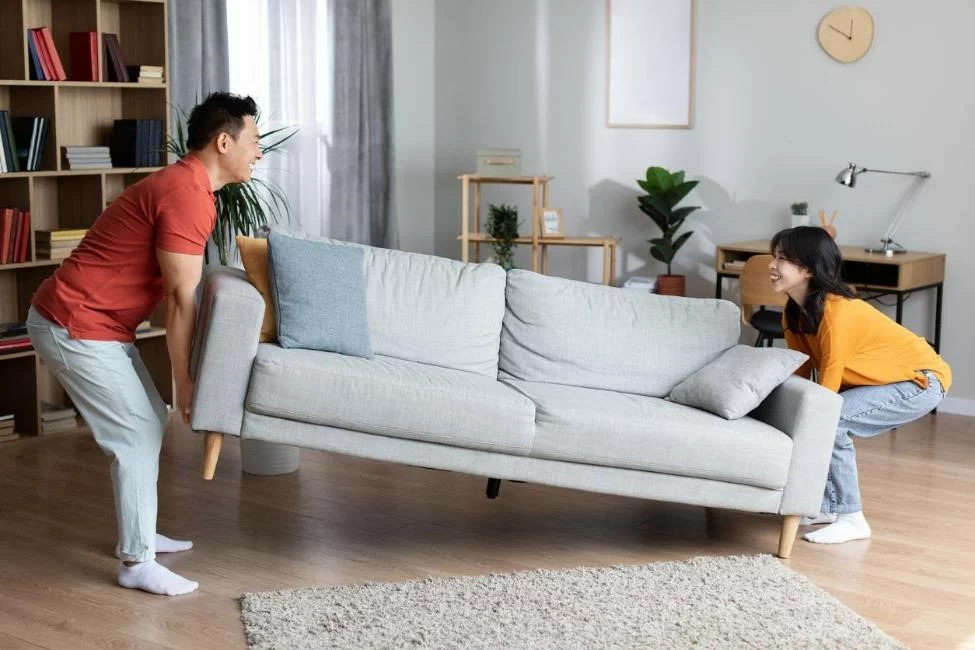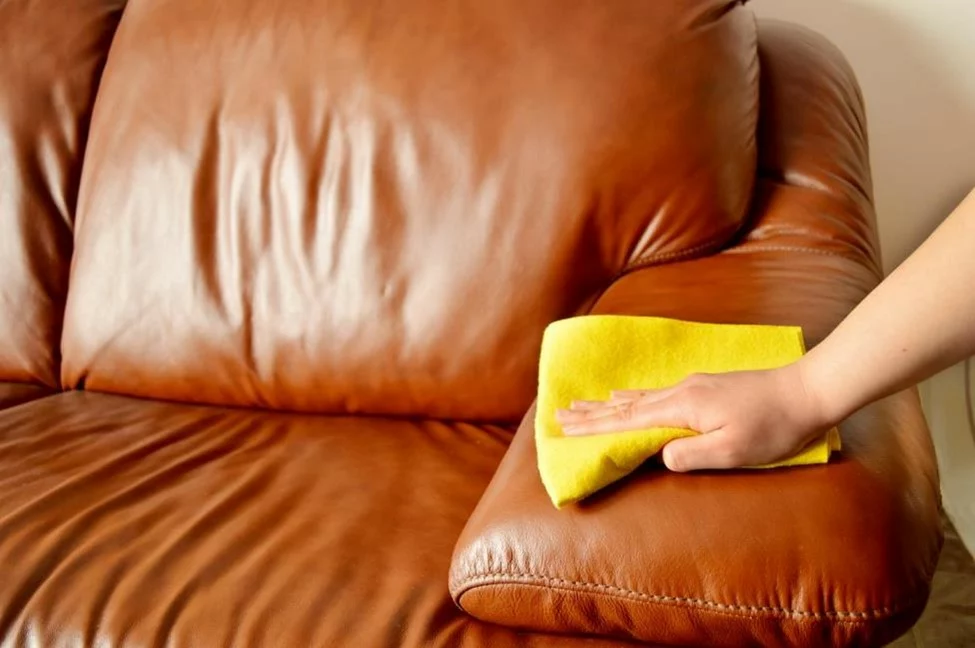Your Guide To Cleaning and Storing Different Furniture Types
May 21, 2024 in Storage Blog

Furniture pieces are some of our most consistently used items, and high-quality furniture isn’t cheap. So when it’s time to clean them after a spill or store them for a move, it’s essential to ensure you’re doing so correctly. Ruining your favorite couch during the big move is one of the worst things.
However, furniture isn’t a monolith. Different furniture types should be stored in different ways and cleaned in different ways. When it comes to furniture storage, our experts have seen it all—from the best ways to store furniture to some of the worst. Let’s take a look at some of our tips.
Furniture Storage Tips
Furniture Coverings for Storage
Whether you’re moving your furniture directly to a new home or into storage, it’s important to protect your furniture from the elements and from the journey along the way. That’s why furniture coverings are so important. There are generally two types of furniture coverings that are commonly used.
- Stretch wrap. Also called furniture wrap or plastic wrap, this type of clear furniture cover comes in a roll. It’s made up of heavy-duty plastic that, when tightly wrapped around furniture, helps prevent scratches and stains.
- Moving blankets. Sometimes called moving pads, these thick pieces of fabric also help prevent scratches and stains. They’re more robust than stretch wrap and don’t rip or tear as easily. Additionally, they can provide better protection from protruding sections of furniture, like wheels.
Bedroom Furniture Storage
What makes a bedroom a bedroom? It’s simple: the bed! Storing your bed and mattress can be a tricky proposition if you’ve never done so before.
You can keep your mattress vertically or horizontally over short distances and for relatively small periods of time. Just be sure you’re not putting anything hefty on top of your mattress, as it can quickly deform it. The same goes for sharp objects, which can pierce and tear the mattress. But it would be best if you never stored your mattress upright for an extended period. Mattresses are not designed to be in any configuration other than horizontally for an extended period.
Our pro tip is to put your mattresses on top of other items in storage or in your storage unit. That way, you can keep it horizontal and avoid placing anything on top that might hurt the mattress.
Office Furniture Storage
Most office furniture consists of wooden furniture and electronics like computers, monitors, and printers. Be sure to follow the best methods for storing wooden furniture and electronics, respectively.
Fortunately, the biggest enemies of wooden furniture and electronics are the same: dust and moisture. Dust can eventually scratch or tarnish wood and damage sensitive electronics if it gets inside the casing. And suppose you’ve ever spilled water on your electronics or woke up to discover that your pet had spilled your drink on your wooden desk overnight. In that case, you know how devastating both scenarios can be.
We recommend storing any wooden furniture or electronics in a climate-controlled storage space. Whether it’s specifically in a climate-controlled storage unit or in a basement you keep dehumidified, climate control can help your items stay protected for longer.
Leather Furniture Storage Tips

Storing leather furniture follows the same general principles as storing any other kind of furniture. However, the best way to store leather furniture is by using leather conditioners. Leather conditioner is a liquid substance designed to be rubbed on leather surfaces to protect it from dust, dirt, grime, and cracking—all things that can happen to leather furniture if stored long term.
How To Clean Furniture
The best furniture cleaner for a given piece of furniture is determined by the type of fabric it consists of. In fact, furniture tags include special instructions on how to clean your furniture best. These are called upholstery cleaning codes, and you’ll want to follow them to avoid damaging your furniture.
- “W.” This stands for “water,” as you’ll want to use a water-based cleaner to tackle stains, dirt, and grime. You can also use water, as the name suggests.
- “S.” This stands for “solvent,” as you can only use solvent-based cleaners to spot-clean them. Alternatively, you can have this fabric dry-cleaned.
- “S/W.” You can use water-based cleaning products, solvent-based cleaning products, or dry cleaning on furniture with this code.
- “WASH.” This stands for “washing machine,” and any pieces of furniture with this tag can be put in the washing machine. Just be sure to select the delicate setting.
- “X.” Clean these only with a vacuum cleaner, as cleaning products may damage the furniture.
Furniture Storage Units
Self-storage is an excellent solution for furniture storage, either in the short or long term. Whether you’re in the middle of a move or just need a little additional space, renting a furniture storage unit can help you with your storage needs. Find your nearest storage facility and rent a unit today!
